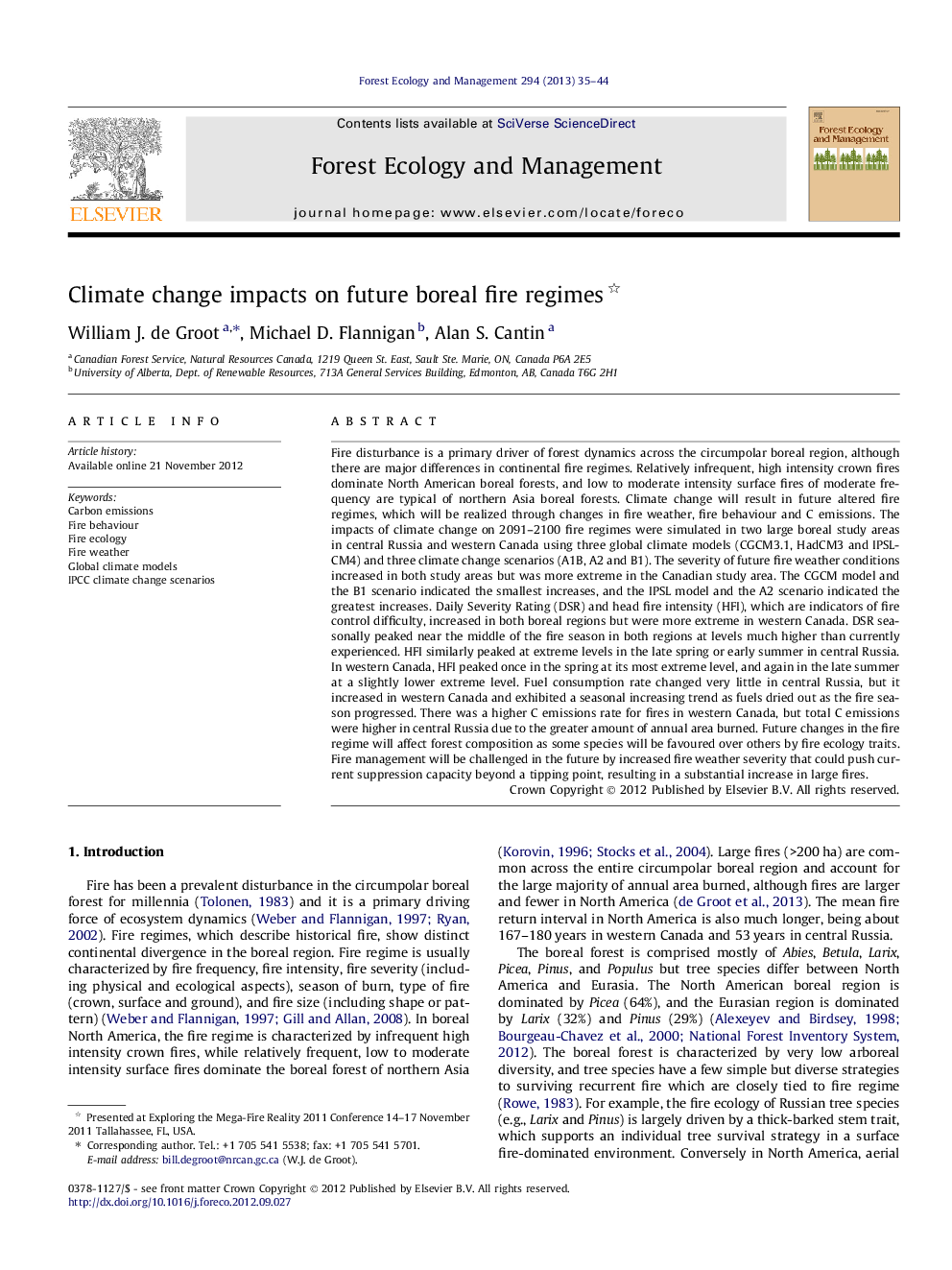| کد مقاله | کد نشریه | سال انتشار | مقاله انگلیسی | نسخه تمام متن |
|---|---|---|---|---|
| 86875 | 159219 | 2013 | 10 صفحه PDF | دانلود رایگان |

Fire disturbance is a primary driver of forest dynamics across the circumpolar boreal region, although there are major differences in continental fire regimes. Relatively infrequent, high intensity crown fires dominate North American boreal forests, and low to moderate intensity surface fires of moderate frequency are typical of northern Asia boreal forests. Climate change will result in future altered fire regimes, which will be realized through changes in fire weather, fire behaviour and C emissions. The impacts of climate change on 2091–2100 fire regimes were simulated in two large boreal study areas in central Russia and western Canada using three global climate models (CGCM3.1, HadCM3 and IPSL-CM4) and three climate change scenarios (A1B, A2 and B1). The severity of future fire weather conditions increased in both study areas but was more extreme in the Canadian study area. The CGCM model and the B1 scenario indicated the smallest increases, and the IPSL model and the A2 scenario indicated the greatest increases. Daily Severity Rating (DSR) and head fire intensity (HFI), which are indicators of fire control difficulty, increased in both boreal regions but were more extreme in western Canada. DSR seasonally peaked near the middle of the fire season in both regions at levels much higher than currently experienced. HFI similarly peaked at extreme levels in the late spring or early summer in central Russia. In western Canada, HFI peaked once in the spring at its most extreme level, and again in the late summer at a slightly lower extreme level. Fuel consumption rate changed very little in central Russia, but it increased in western Canada and exhibited a seasonal increasing trend as fuels dried out as the fire season progressed. There was a higher C emissions rate for fires in western Canada, but total C emissions were higher in central Russia due to the greater amount of annual area burned. Future changes in the fire regime will affect forest composition as some species will be favoured over others by fire ecology traits. Fire management will be challenged in the future by increased fire weather severity that could push current suppression capacity beyond a tipping point, resulting in a substantial increase in large fires.
► Future fire weather severity is expected to increase across the boreal region.
► Daily Severity Ratings are projected to substantially increase in the boreal region.
► Some climate change scenarios indicated Daily Severity Rating increases of 400–500%.
► Increased future fire weather severity could push suppression capacity beyond a tipping point resulting in more large fires.
Journal: Forest Ecology and Management - Volume 294, 15 April 2013, Pages 35–44